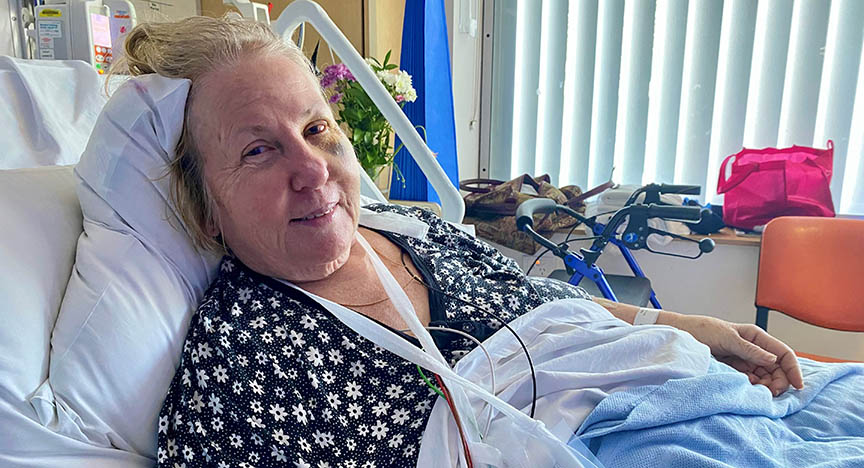
Mission Beach resident Brone Reed is alive and recovering quickly thanks to a new approach where clot-dissolving medicine can be administered at smaller regional hospitals.
The 75-year-old did not realise she’d had a stroke at her Mission Beach home, but due to the quick actions of emergency services, Innisfail Hospital staff were able to administer the clot-dissolving drug on site.
Just weeks earlier, the Cairns Stroke Team had delivered the life-saving thrombolysis training at Innisfail Hospital, empowering staff to later detect that Brone had a brain clot and administer medication to dissolve it.
‘The Royal Flying Doctor Service flew me from Innisfail to Townsville - 30 minutes that's all - and by the time I got there they did the CT scan and the clot was dissolved,’ Brone said.
‘I still can't believe I had a stroke. It (facial and leg paralysis) has improved, I can move this leg now, I couldn't even lift it up. My voice is a bit croaky but that will come better too.’
Time is the most critical factor from the onset of a stroke to treatment, even down to the minute can impact a patient's survival rate and quality of recovery, according to Dr Ramesh Durairaj, Cairns Hospital Senior Staff Specialist in Stroke Medicine and Geriatrics.
Remote Far North Queensland patients were previously flown to the closest major hospital - Cairns or Townsville - so stroke investigation and treatment could be carried out. That travel time and subsequent stroke investigation meant more precious time was lost.
Dr Durairaj together with the Cairns Stroke Team endeavoured to fill this gap and launched a plan to change hospital procedures and provide training. It means staff at Innisfail, Mareeba and Atherton hospitals can identify a certain criterion of stroke with ‘qualifying features’ and administer medication onsite in a safe and timely manner.
‘I am very glad the emergency department at Innisfail Hospital was able to provide prompt assessment and timely clot-busting treatment in the middle of the night to limit and reverse the symptoms of stroke for Brone,’ Dr Durairaj said.
‘By carrying out such treatment locally in our district hospitals, we can make a big difference to the outcome of stroke.
‘Patients should know about this because they are not disadvantaged from being treated for stroke in a regional hospital. This is bringing the treatment closer to home.’
Dr Durairaj commended staff for developing the skillset to administer stroke treatment and monitor the patient until they could be transferred to Townsville or Cairns.
‘The effort made by the local team to upskill themselves and update their pathways to give this valuable service, with remote support by Cairns stroke specialists, is really commendable,’ he said.
Brone thanked hospital staff for the lifesaving care she had received, while also crediting a higher power.
‘There's someone above us that's looking after us. I've definitely learnt that. You can be here one minute and not the next, you don't realise how quickly everything can be taken away.’
A stroke is always a medical emergency and it is important to seek urgent care by calling 000.
Telltale signs of stroke include facial drooping, difficulty lifting arms and slurred speech.
For more visit healthdirect's stroke signs and symptoms.